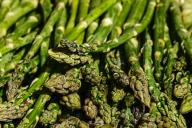If you feel anxious or sad, and your first instinct is binge eating, then it's time to find solutions for that problem.
Overeating is a pretty widespread issue, and that's why nutritionists have made a list of foods that can help.
Use these products to fight overeating and be healthier.
Fiber-Rich Foods
Foods high in fiber, like whole grains, fruits, and vegetables, can help you feel full for longer.
They take longer to digest, so you're less likely to overeat.

Protein
Protein-rich foods, such as lean meats, fish, eggs, and legumes (like beans and lentils), can curb your appetite and reduce hunger.
Healthy Fats
Foods with healthy fats, like avocados, nuts, and olive oil, can keep you feeling satisfied and prevent overeating.
Water-Rich Foods
Foods with high water content, such as soups, salads, and watery fruits like watermelon and cucumbers, can help control your appetite.
Spices and Herbs
Some spices and herbs, like cinnamon and ginger, may help reduce cravings and prevent overeating by adding flavor to your meals.
Probiotic Foods
Foods with probiotics, like yogurt and kefir, can support a healthy gut, which may help regulate appetite.
Apples and Pears
These fruits contain natural compounds that can make you feel full and reduce overeating.
High-Volume, Low-Calorie Foods
Foods that are low in calories but take up a lot of space in your stomach, like salads and vegetables, can help you feel full without excessive calorie intake.
Conclusion
By including these foods in your diet, you can manage your appetite and reduce the chances of overeating.
Remember that it's not just about what you eat but also how you eat.
Eating mindfully, slowly, and paying attention to your body's signals of fullness can also help prevent overeating.









